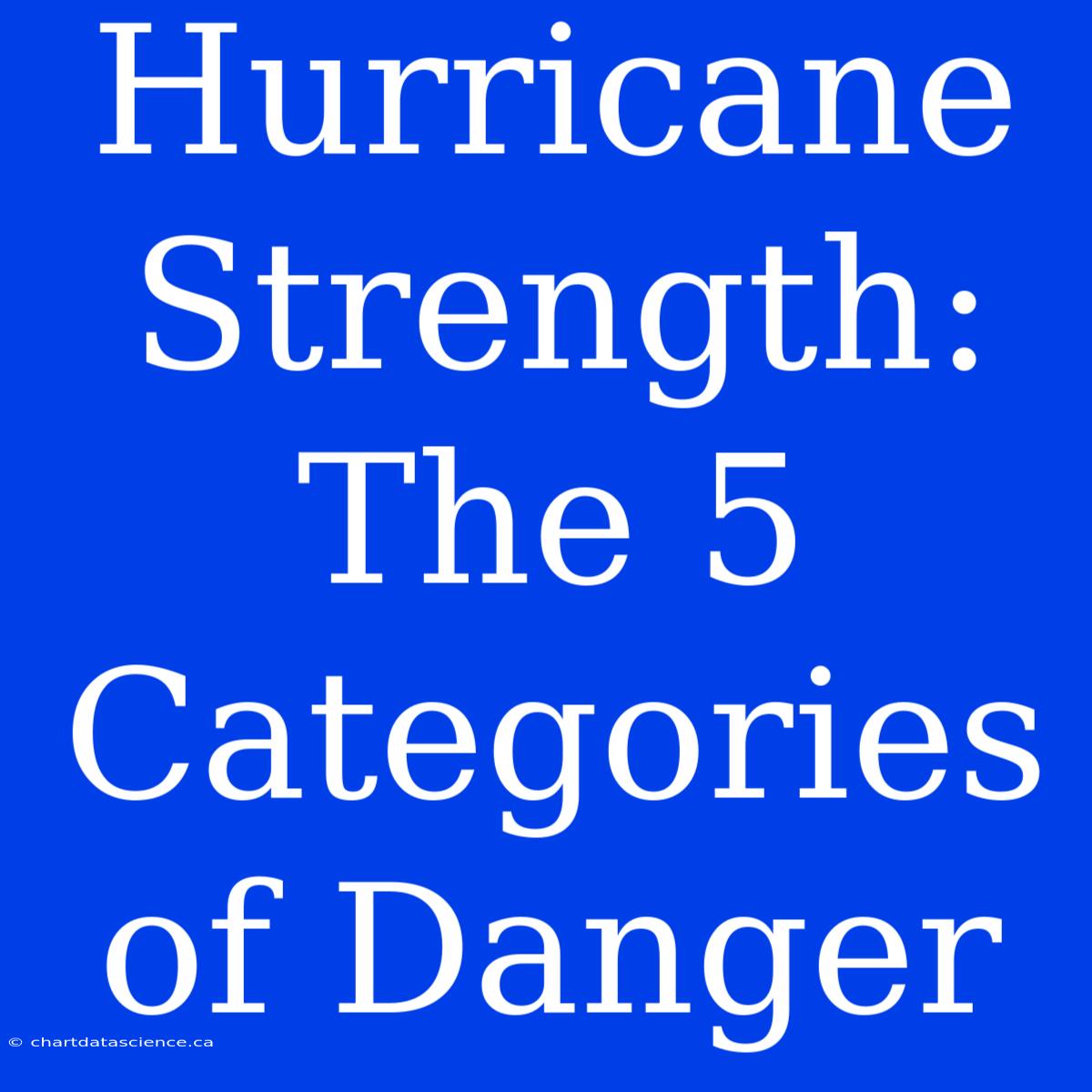Hurricane Strength: The 5 Categories of Danger
Hurricanes, those swirling storms of wind and rain, are a force of nature that can cause widespread destruction and devastation. Knowing how strong a hurricane is can mean the difference between a minor inconvenience and a life-altering disaster. The Saffir-Simpson Hurricane Wind Scale, a five-category system, helps us understand the potential dangers of these powerful storms.
The 5 Categories of Hurricane Strength
The Saffir-Simpson Hurricane Wind Scale categorizes hurricanes based on their sustained wind speed. Let's break down each category:
Category 1: Minimal
- Wind Speeds: 74-95 mph
- Impact: Some damage to trees and power lines; minor structural damage.
Category 2: Moderate
- Wind Speeds: 96-110 mph
- Impact: More extensive tree damage; roof damage, power outages, and flooding likely.
Category 3: Major
- Wind Speeds: 111-129 mph
- Impact: Severe damage to roofs, buildings, and trees; widespread power outages and flooding.
Category 4: Extreme
- Wind Speeds: 130-156 mph
- Impact: Catastrophic damage to buildings and infrastructure; widespread power outages and flooding; life-threatening conditions.
Category 5: Catastrophic
- Wind Speeds: Over 157 mph
- Impact: Complete destruction of homes and businesses; widespread power outages, flooding, and catastrophic damage to infrastructure; life-threatening conditions.
Why Understanding Categories Matters
Knowing the hurricane category is crucial for preparedness and safety.
- Evacuation: When a hurricane is categorized as Category 3 or higher, authorities may issue evacuation orders.
- Safety: Knowing the potential impact of the storm allows for better preparation, including securing your property and securing your emergency supplies.
- Damage Assessment: The hurricane category helps emergency responders and insurance companies assess the extent of the damage and allocate resources appropriately.
Beyond Wind Speed
While the Saffir-Simpson Scale focuses on wind speed, the damage a hurricane causes can be influenced by other factors like storm surge, rainfall, and the geographic location.
- Storm Surge: This is the rise in sea level due to a hurricane's strong winds, posing the greatest threat in coastal areas.
- Rainfall: Heavy rainfall can lead to flooding, even in areas not directly hit by the hurricane's center.
Staying Safe During Hurricane Season
- Stay Informed: Stay informed about the latest weather forecasts and warnings from reliable sources like the National Hurricane Center.
- Prepare a Hurricane Kit: Gather essential supplies, including food, water, first-aid kits, batteries, and a battery-powered radio.
- Secure Your Home: Board up windows, secure loose objects, and bring in outdoor furniture.
- Follow Evacuation Orders: If authorities issue an evacuation order, take it seriously and evacuate to a safe location.
By understanding the different categories of hurricane strength and taking necessary precautions, you can better prepare for and minimize the potential risks these powerful storms pose.

